Technology
Improving the Vibration Resistance Performance of Crystal Products
1. Background
In recent years, due to the diversification of base station installation locations and changes in the size of facilities, crystal products have been mounted in locations susceptible to the effects of wind, cooling fans, and other factors, and the number of cases where deterioration of characteristics due to these vibrations has become a problem tends to increase.
In addition, in wearable devices such as smartwatches and mobile devices such as smartphones, performance deterioration of GPS functions due to vibration and impact is also a problem.
Furthermore, as data capacity increases and communication speeds increase, multi-level modulation advances, and data errors occur due to slight phase shifts, thus increasing demand for devices with less characteristic degradation under vibration.
This article explains the mechanism of characteristic deterioration and its impact on the equipment, and introduces the NDK-original structure crystal oscillators that significantly suppressed characteristic deterioration.
2. Mechanism of characteristic deterioration due to vibration
Generally, crystal element is held at two points on one side by a conductive adhesive, as shown in Fig. 1. Due to this construction, when vibration in the product height direction (Z direction) is applied in particular, the frequency fluctuates due to the deflection of crystal element on the non-hold side.
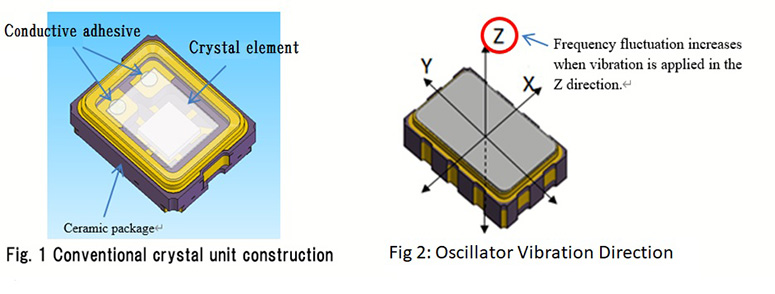 |
|
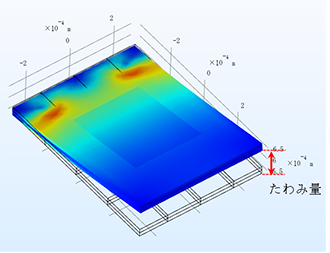 |
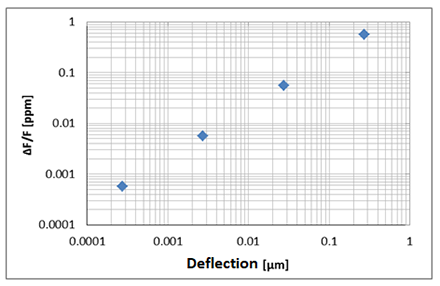 |
|
Fig. 3 Blank deflection during vibration |
Fig.4 Relation between blank deflection and frequency change |
3. Crystal oscillators Characteristics Degradation and GPS Reception Characteristics Degradation Examples
<Characteristic deterioration of oscillator alone>
When vibration is applied during oscillator operation, the spectrum in the vicinity is greatly deteriorated as shown in Fig. 6 compared to that at standstill (Fig. 5).
This means that phase noise may deteriorate, which may affect the quality of communications, such as data errors occurring in communications equipment.
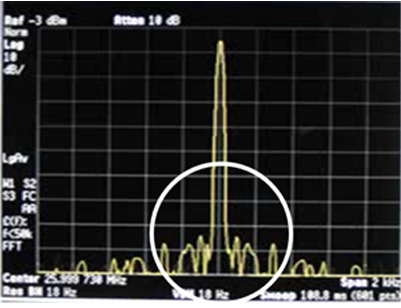 |
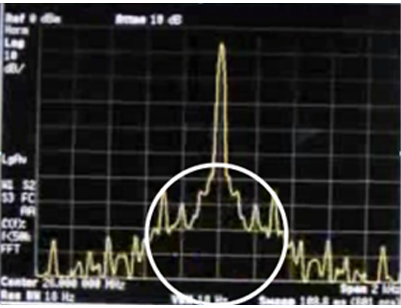 |
|
Fig. 5 Spectrum at rest |
Fig. 6. Spectrum at excitation |
<GPS Reception Characteristics Evaluation>
The impact of the characteristic deterioration of the oscillator during excitation on the GPS reception characteristics was evaluated. We used a 26MHz TCXO (temperature compensated crystal oscillator (TCXO) (hereinafter referred to as TCXO) as the reference signal source and applied only the boards with TCXO as shown in Fig. 7 to evaluate the constellation (*1) compared with that at rest and vibrated.(*1) Signal point arrangement of the digital signal modulation signal
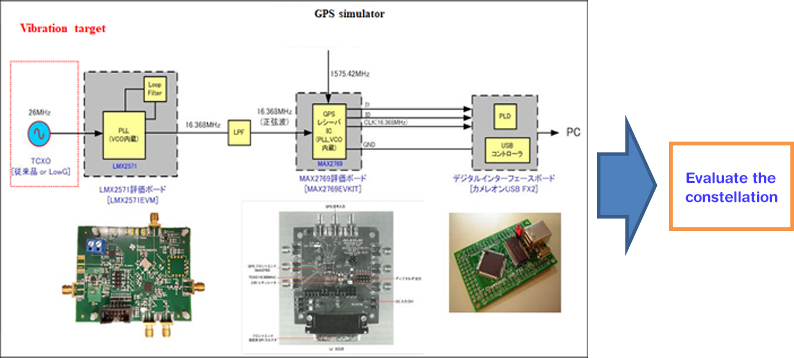
Fig. 7 GPS Reception Evaluation System
It was confirmed that the constellation is greatly distorted (the phase rotates) when TCXO is excited compared to when it is stationary. (Figs. 8 and 9)
GPS devices may be applied with an error correction technique that uses software to correct for these degradations,or with a housing or vibration-proof rubber, etc. If these degradations are exceeded, a GPS reception error may occur.
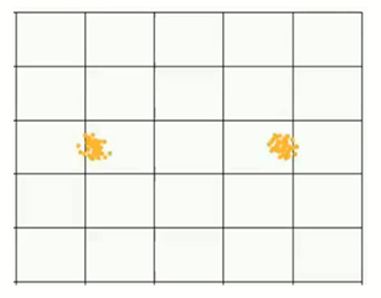 |
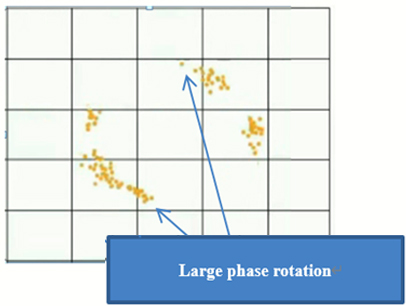 |
|
Fig.8 constellation with no excitation |
Fig.9 constellation with excitation |
Furthermore, in recent years, the conventional 64QAM (*2) and 256QAM to 1024QAM are at the stage of commercialization, and researches have been conducted on ultra-multi-level modulation, such as 4096QAM.
In these types of communications, a slight phase shift leads to data errors, making it impossible to ignore the degradation of characteristics caused by vibrations. It is also reported that the fixed degradation at a phase error of 1 degree is more than 5 times that of 64QAM in 1024QAM. (Figs. 10 and 11)
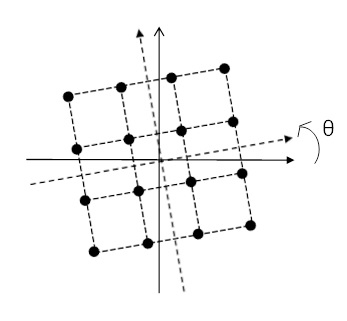 |
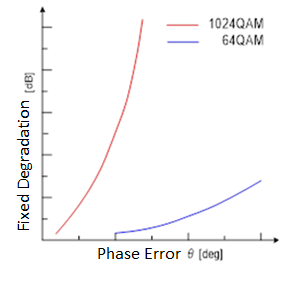 |
|
Fig.10 Phase Error during Carrier Regeneration |
Fig. 11 Fixed Degradation against Phase Error |
(*2) QAM: Quadrature Amplitude Modulation (direct amplitude modulation)
4. Improvement of characteristic deterioration under vibration
Based on the aforementioned evaluation results, we have developed an oscillator with less characteristic deterioration under vibration.
Based on the results of analysis of the mechanism of characteristic deterioration using stress analysis simulations, we have devised a unique structure that suppresses crystal element blank distortion caused by external vibration.
As a result, we have developed a low-acceleration-sensitivity crystal oscillators (Low G-Sensitivity Crystal Oscillator, hereinafter referred to as Low-G oscillator) that improves the degradation of characteristics to about 1/10 that of conventional products and offers superior vibration-resistance performance.
The spectrum when Low-G oscillator is excited is shown in Fig. 13. It can be confirmed that the degradation is significantly suppressed compared to the conventional product (Fig. 12).
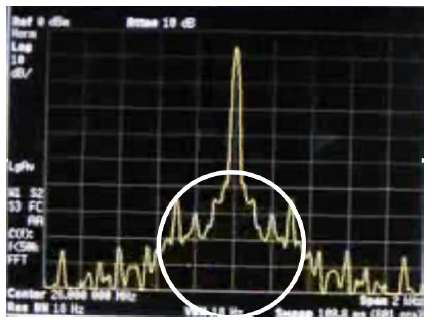 |
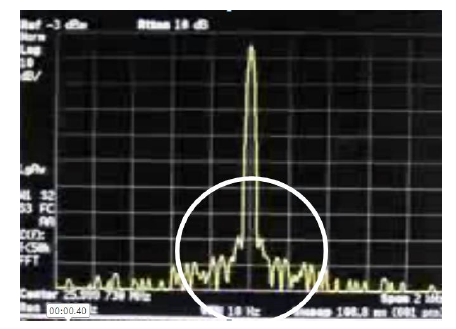 |
|
Fig 12: Spectrum of conventional products during excitation |
Fig 13: Spectrum of Low-G oscillator during excitation |
We also confirmed a significant improvement in GPS reception assessment using the system shown in Fig. 7, with no disturbance in the constellation. (Figs. 14 and 15)
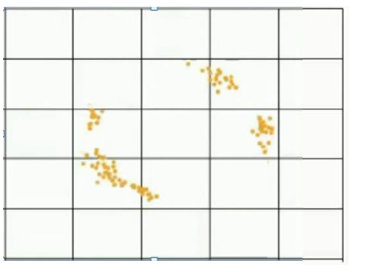 |
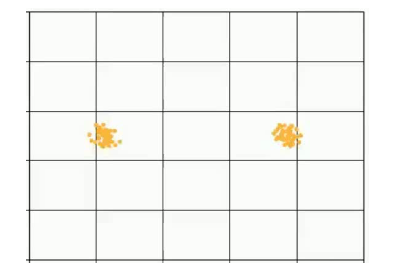 |
|
Fig. 14 Conventional product excitation |
Fig. 15 Low-G oscillator excitation |
The acceleration sensitivity (/g) was calculated to quantitatively show the degree of improvement in the oscillator alone.
The acceleration sensitivities can be obtained from spurious generated during excitation by Equations 1 and 2.
As shown in Fig. 16, the sensitivity is about 1/10 at the full excitation frequency compared with the conventional product, and it has been confirmed that the performance has been improved by a factor of 10.
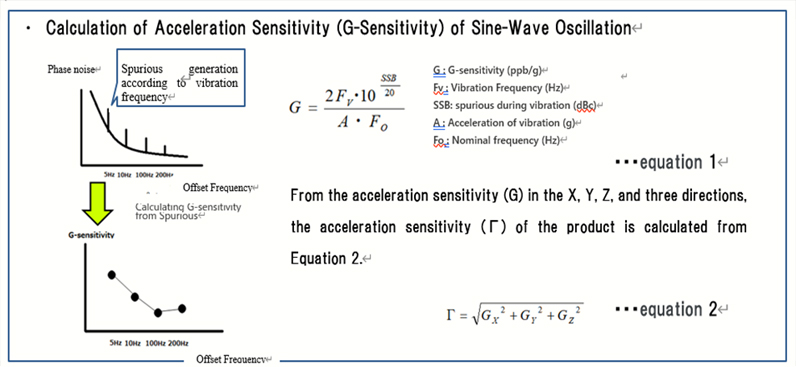
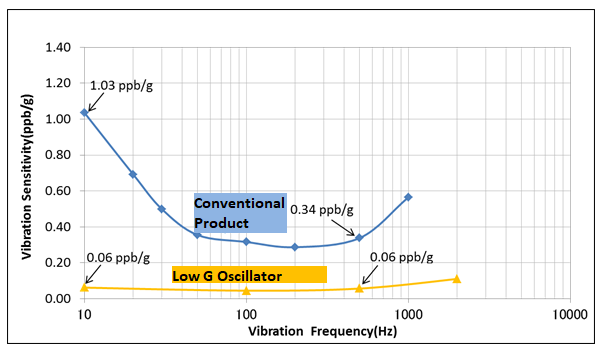
Fig. 16 Comparison of acceleration sensitivity with conventional products
5. Summary
Conventional crystal devices have differences due to their products, but their characteristics deteriorate during excitation due to their structure.
Oscillator characteristic deterioration during excitation has conventionally been regarded as a problem only for specific devices, but there are concerns about the possibility of impact communication quality in many communication devices in the future due to changes in the location of communication devices and communication methods.
We have confirmed that the adoption of our unique structure greatly improves its degradation, and that the phase deviation of the constellation is also greatly improved in the GPS evaluation system.
We have released two types of small products (2016 size, 3225 size TCXO) with anti-vibration performance measures, but we will expand our lineup of crystal unit, SPXO (simple packaged crystal oscillator (SPXO)) and VCXO (voltage-controlled oscillators) in the future.
